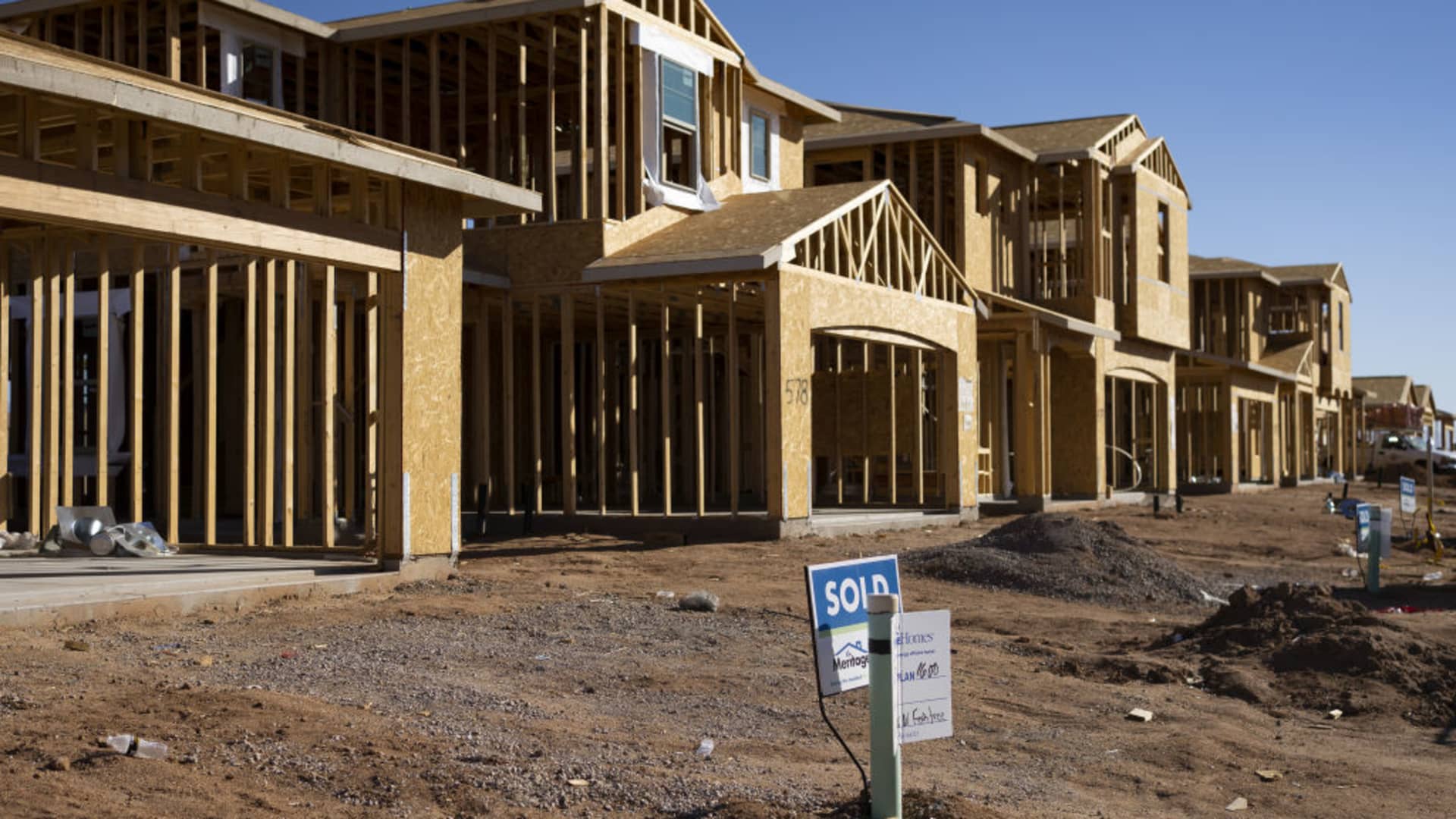

Sales of newly built homes fell 8.7% in August from July to a seasonally adjusted annualized pace of 675,000 units, according to the U.S. Census Bureau.
That is the slowest pace since March. Sales were still 5.8% higher than August 2022.
The Census count is based on signed contracts during the month, and mortgage rates took a sharp jump higher. The average rate on the popular 30-year fixed loan ended July at 7.04%, according to Mortgage News Daily. By Aug. 22, it was at 7.48%.
“Very stretched affordability means demand will be unable to recover in the near term, causing new home sales to fall back from 675,000 annualized in August to 600,000 annualized by the end of the year,” wrote Imogen Pattison, assistant economist at Capital Economics.
The median price of a newly built home sold in August was $430,300, a drop of 2% compared to August of last year. Homebuilders have been lowering prices as well as offering more incentives, such as buying down mortgage rates. They had slowed those incentives last spring, when rates went below 7%, but they are ramping them up again.
One of the nation’s largest homebuilders, Lennar, recently reported strong earnings, but that was for a quarter where mortgage rates hadn’t hit their highest yet. Lennar Chairman Stuart Miller, however, noted buyer incentives in the release.
“Homebuilders continued to use incentives, including buy-downs, to offset rising interest rates and tighter capital, which limit affordability,” said Miller.
Homebuilders continue to benefit from the extremely tight supply of existing homes for sale, but that boost may finally be overcome by higher interest rates. Builder sentiment dropped into negative territory in September for the first time in seven months, according to the National Association of Home Builders’ monthly survey.
In September, 32% of builders said they cut prices, compared to 25% in August. That’s the largest share of builders reducing prices since December 2022, when 35% were doing so.
The average price cut was 6%.
“High mortgage rates are clearly taking a toll on builder confidence and consumer demand, as a growing number of buyers are electing to defer a home purchase until long-term rates move lower,” Robert Dietz, NAHB’s chief economist, said in a release.
